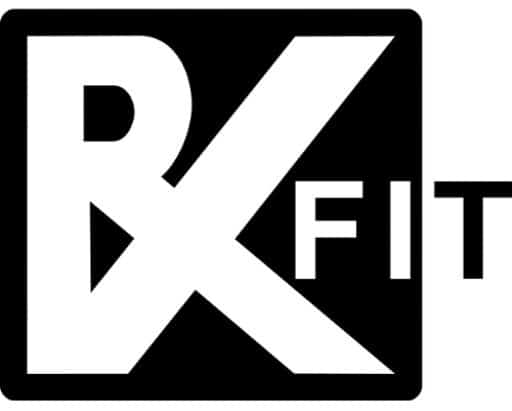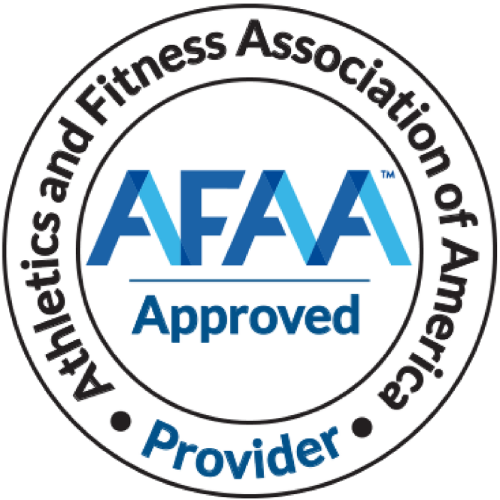Whether you’re an athlete striving for peak performance or simply seeking a better way to alleviate everyday aches and pains, when you use a foam roller properly it can be a game-changer. However, not everyone is aware of the many benefits that they hold, or even how to use a foam roller properly.
In this comprehensive guide, we will help you unravel the mystery of how to use foam roller techniques and highlight the numerous benefits.
What is a Foam Roller?
Foam rolling has gained immense popularity in recent years. At its core, a foam roller is a self-massage tool. They are typically made of EVA foam or other similar materials and their cylindrical shape allows you to apply pressure to various parts of your body.
Foam rollers come in various sizes, densities, and textures, making them accessible for people of all fitness levels. Shorter ones targeting specific areas, and longer ones offering versatility. The varying textures, such as smooth, bumpy, and grooved, allow for different intensities and sensations during rolling.
Importance of Foam Rolling
Knowing how to use a foam roller in a versatile self-care technique offers a myriad of benefits. It aids muscle pain recovery, increases flexibility, reduces pain, and improves circulation, making it a must-have in your wellness routine when you can both place the foam roller and roll properly.
Getting Started with Foam Rolling
A foam roller is your ticket to unlocking a world of physical wellness and self-care that will leave you feeling invigorated and ready to conquer each day with a renewed sense of well-being.
Choosing the Right Foam Roller
Your journey starts with selecting the perfect foam roller for your needs, the right one can transform your experience. The density, texture, size, and shape matters.
A softer foam roller is great for beginners, while a firmer one provides deeper muscle penetration for advanced users. Meanwhile, smooth rollers are excellent for general use, while textured ones offer a deeper massage effect.
We at RxFit, recommend that you take into consideration your experience level and pain tolerance. Plus, with the help of our personal trainers, you can learn how to use foam rollers properly and reap the benefits of foam rolling. Contact us today to get a free assessment.
Setting Up Your Space
Setting up the right space is crucial for a satisfying experience. You will need to make sure that your space is clutter-free and spacious enough for your full range of motion. You may also incorporate a yoga mat or a soft surface to protect your knees and elbows, versus a hard floor for a more intense sensation.
An additional option is creating a serene atmosphere with calming music or essential oils if it helps you relax during your rolling session.
Proper Body Alignment
Proper body alignment ensures that you get the most out of your foam roller session while minimizing the risk of injury. You should begin with the foam roller horizontally under the muscle group you want to target and position your body atop it.
Then you will be able to maintain balance by placing your hands or forearms on the ground, further controlling the pressure by adjusting your body weight. You will then be able to roll slowly and steadily, allowing the roller to massage the muscle pain.
It’s important to pay attention to tender spots and knots and spend more time on them.
Foam Rolling Techniques
With the following techniques, you’ll not only address muscle tightness and discomfort but also enhance your overall well-being. By mastering the art of how to use a foam roller, you’ll discover the magic of self-myofascial release.
Basic Foam Rolling Principles
The foundation of foam rolling, Self-Myofascial Release (SMR), is like a deep tissue massage you administer to yourself. By applying pressure to knots and trigger points, you can release muscle tension and improve muscle function.
The use of a foam roller focuses on locating and working on those tight, sensitive areas. By applying sustained pressure to these points, and breathing deeply to relax you allow the muscle to release.
Maximizing the Benefits
Maximizing the benefits of using a foam roller is an art that combines timing, consistency, and creativity.
Duration and Frequency
First, you must know how long should you foam roll.
With the right duration and frequency, you can make each rolling session a fulfilling self-care ritual. To make the most of your foam rolling sessions, aim for 10-20 minutes. This duration allows you to target multiple muscle groups without rushing.
You should aim to incorporate the foam roller into your routine 2-3 times a week, if possible. This consistency is key to reaping long-term benefits, but even once a week can make a difference.
Combining Foam Rolling with Stretching
Pairing foam rolling with stretching creates a dynamic duo that supercharges your flexibility and overall performance. Using a foam roller is the perfect prelude to stretching. Rolling helps loosen muscle knots and improve circulation, preparing your body for a more effective stretch.
After foam rolling a specific muscle group, follow up with static stretching for deeper flexibility. This combination can enhance your range of motion and reduce the risk of injury.
Using Foam Rollers for Rehabilitation
When used for rehabilitation, using a foam roller can be a vital tool in your recovery journey, helping you regain strength and mobility. It targets specific muscle groups to alleviate pain and discomfort associated with injuries while promoting faster recovery.
If you’re using foam rolling for rehabilitation, consider consulting a physical therapist or healthcare professional for guidance. They can provide personalized recommendations based on your condition.
Common Mistakes to Avoid
Foam rolling can be a transformative self-care practice, but only when done properly. Avoiding common mistakes such as rolling too fast, applying excessive pressure, and ignoring pain signals is key to reaping the full benefits of foam rolling without compromising your well-being.
Rolling Too Fast
Rolling too quickly over your tight muscles is a common blunder as it doesn’t give your muscles enough time to release tension and knots. Slowing down and taking time to spend at least 20-30 seconds on each muscle group allows for relief.
Applying Too Much Pressure
While it’s tempting to believe that the harder you slowly roll, the better, excessive pressure can lead to bruising and excessive discomfort. Using your full body weight on the roller can cause more harm than good, hence it’s important to apply moderate pressure to start and gradually increase as your muscles adapt.
Ignoring Pain Signals
Be sure to pay attention to the pain as this is your body’s way of signaling that something is wrong. Ignoring it during foam roller usage can lead to injury or overuse while pushing through unbearable pain is counterproductive. You need to listen to your body.
Discomfort during foam rolling is normal, but sharp, excruciating pain is not. If you encounter pain that doesn’t subside, adjust your technique or consult a professional.
Benefits of Foam Rolling
The benefits of foam rolling are nothing short of magical. It opens the door to improved flexibility, rapid muscle recovery, the alleviation of muscle soreness, and the prevention of injuries. With foam rolling, you’re not just maintaining your physical health; you’re actively nurturing your body’s potential for growth, strength, and vitality. It’s a journey where each foam roller roll is a step towards a more vibrant, pain-free, and resilient version of yourself.
Improved Flexibility and Range of Motion
Incorporating a foam roller is like a key to your body’s flexibility and mobility. It helps to break down muscle adhesions, releasing stiffness, and allowing for a greater range of motion. Enhanced flexibility and a broader range of motion can mean the difference between success and mediocre results.
Enhanced Muscle Recovery
After a tough workout, your muscles need some tender loving care. Foam rolling speeds up recovery by reducing muscle soreness and minimizing downtime between training sessions. It’s like hitting the reset button for your muscles. Using a foam roller eases tension, reducing the risk of overuse injuries and helping you bounce back stronger.
Alleviation of Muscle Soreness
Sore muscles are a common complaint for anyone engaged in physical activity. Foam rolling helps alleviate this discomfort by breaking up knots and enhancing blood flow to the affected areas. Incorporating a foam roller into your daily routine can become an essential part of your self-care regimen to reduce muscle stiffness, promoting relaxation and comfort.
Prevention of Injuries
By regularly using a foam roller, you proactively safeguard your body against potential injuries. Supple muscles and fascia are more resistant to strains and sprains. Foam rolling is like an insurance policy for a longer, injury-free journey as it minimizes the risks that could cut your journey short.
How Long Should You Foam Roll?
The art of timing in foam rolling is about finding the sweet spot that maximizes the benefits while catering to your body’s specific needs. The guidelines for different muscle groups offer a starting point, but it’s crucial to listen to your body’s signals and personalize your routine accordingly.
Time Guidelines for Different Muscle Groups
For your shoulders and upper back, aim for 30-60 seconds per muscle group. The gentle sustained pressure allows you to target tension effectively.
Your quadriceps, hamstrings, calves, and shins benefit from 30-60 seconds each for maximum effect, which helps to release tightness.
The abdominals and lower back muscles need about 20-40 seconds to alleviate discomfort and improve posture.
Personalizing Your Routine
The most critical factor is your body’s response. You need to pay attention to how your muscles react while using a foam roller. If you feel knots or tightness, spend a bit more time working on those areas. Not sure where to start, RxFit’s personal trainers can get you there starting with this free assessment.
As you become more experienced with foam rolling, you may begin to extend the duration. You aim to gradually increase the time spent on each muscle group, ensuring your body can handle the added pressure.
Because everyone’s body is different, it is important to customize how long you can use a foam roller based on your unique fitness goals, pain levels, and activity types.
Back Roller Exercises
A strong and pain-free back is within your reach, thanks to the transformative power of foam rolling exercises. Your back is central to your posture, movement, and overall stability.
Foam Rolling for a Stronger Back
A strong back not only keeps you upright but also supports your daily activities and can reduce the risk of debilitating conditions such as chronic pain, muscle stiffness, and postural problems.
- Upper Back Mobility: The thoracic spine, or upper back, can become stiff due to prolonged sitting or poor posture. Utilizing a foam roller on the upper back is like a rejuvenating massage, improving mobility and reducing tension.
- Lower Back Pain Relief: Lower back pain is a common complaint for many, often caused by muscle imbalances and tightness. Foam rolling the lower back gently can alleviate discomfort and promote relaxation.
- Spinal Decompression: Spinal decompression exercises using a foam roller can help alleviate pressure on the vertebrae. By carefully targeting the muscles along the spine, you can create space and relief.
Incorporating Foam Rolling into Your Fitness Routine
Whether you’re preparing for a workout, recovering afterward, or enjoying a well-deserved rest day, foam rolling seamlessly integrates into every aspect of your fitness lifestyle and injury-prevention exercises. By making it a consistent practice, you’ll ensure that every foam roll contributes to a stronger, more resilient, and happier you.
Pre-Workout Warm-Up
It’s important to spend a few minutes rolling over key muscle groups, like the calves, quads, and upper back. This stimulates blood flow and enhances mobility, ensuring that your muscles are prepared for action.
By ironing out muscle tension and increasing circulation, foam rollers can help prevent injuries and enable your body to move more efficiently. Incorporating it into your warm-up routine can lead to better workout performance and improved endurance.
Post-Workout Recovery
After an intense workout, your muscles are crying out for some tender loving care. A post-workout foam rolling session focuses on recovery, reducing muscle soreness, and promoting faster healing.
Using a foam roller allows you to unwind both physically and mentally. The rhythmic motion and deep-tissue massage effect provide a soothing cool-down, helping you transition from intense physical activity to a state of relaxation.
Rest Days
Even on rest days, don’t put your foam roller away. Engage in a gentle, full-body foam roller routine. This promotes active recovery, preventing muscle stiffness and supporting the body’s natural healing process. Rest days are ideal for engaging in mindful self-care as foam rolling not only aids recovery but also promotes relaxation and reduces stress.
Working with your own personal trainer at RxFit will help you reap the benefits of foam roller by saving you time and effort. Our team of mobile personal trainers will curate the perfect workout schedule that meets your fitness goals at your convenience.
Foam Rolling for Specific Conditions
Foam rolling isn’t a one-size-fits-all practice; it’s a versatile tool that can be tailored to specific needs. It’s a testament to the universal appeal and adaptability of this self-care practice, ensuring that no matter your stage in life or career, you can roll your way to a more vibrant, mobile, and resilient you.
Foam Rolling for Athletes
Athletes, from sprinters to weightlifters, can use foam roller exercises to improve their performance. Rolling before a workout warms up muscles enhances mobility, and helps prevent injuries. Because quick recovery is crucial for athletes, foam rolling after a strenuous session reduces muscle soreness and expedites the healing process.
Foam Rolling for Desk Workers
Desk workers often suffer from poor posture and delayed onset muscle soreness due to prolonged sitting. Regular foam rolling can alleviate the consequences of desk work, targeting the upper back and hip flexors to improve posture and reduce discomfort.
Desk workers can use foam rolling as a means of relaxation. Daily rolling sessions, even just a few minutes, help relieve stress, promote circulation, and maintain a sense of well-being.
Foam Rolling for Older Adults
Older adults can benefit from foam rolling as a means of maintaining joint mobility and flexibility. Gentle rolling sessions can help alleviate muscle stiffness and maintain an active lifestyle. Since balance and coordination are vital as we age. Foam rolling can assist in strengthening the core and lower body muscles, reducing the risk of falls and injuries.
Precautions and Contraindications
Foam rolling is a powerful self-care practice, but knowing when not to foam roll is as important as understanding the benefits.
Consultation with a Healthcare Professional
If you have underlying medical conditions such as cardiovascular issues, diabetes, or a history of deep vein thrombosis (DVT), it’s crucial to consult a healthcare professional before incorporating foam rolling into your routine. They guide on whether using a foam roller is safe and suggest any modifications or restrictions.
Individuals with chronic pain conditions, such as fibromyalgia or rheumatoid arthritis, should consult a healthcare provider. It’s essential to ensure that foam rolling doesn’t worsen existing pain or interfere with ongoing treatment.
Some individuals may be taking medications or have allergies that could impact their response to foam rolling. Consultation with a healthcare professional can help assess the potential interactions and ensure safety.
Summary of Benefits and Techniques
Foam rolling isn’t just about rolling on a piece of foam; it’s a journey of self-care, empowerment, and well-being. Armed with the knowledge of how to use a foam roller and the benefits of foam rolling, you can slowly roll with purpose, unlock your body’s full potential, and enjoy a life where flexibility, mobility, and vitality are at your fingertips. Together RxFit and you can create a foam rolling massage therapy plan to reduce muscle soreness, especially for you.


